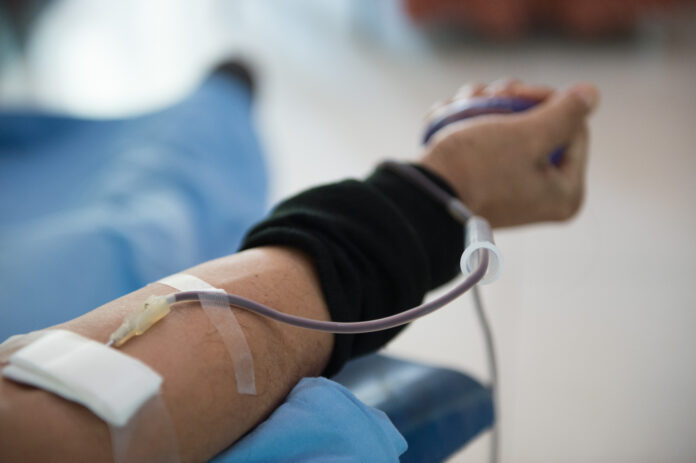The country has gone anemic. Blood donations are at an all-time low, and collection organizations are scrambling to meet ever-present demand.
“It’s always a challenge to collect blood … but since the start of the pandemic, it’s been especially difficult,” Vitalant communications manager Kevin Adler told the Guardian. Blood service organizations were “behind the eight-ball to begin with,” he says, “Because a lot of our donors are older donors … baby boomers. …They’re starting to age out, and not as many of them are donating. … Now with the pandemic, it’s even more difficult.”
Already-declining numbers of donations have seen a massive drop since the Wuhan-based virus entered the world scene.
“Year-to-year, we’re seeing about a ten percent drop in active donor base,” says Adler. “For the last twelve months compared to the previous twelve months, about ten percent fewer donors [are] seen. And that’s on the central coast specifically.”
Virus- and vaccine-related effects are taking a toll on donor follow-through. According to Adler, 30 percent of Vitalant donors on the central coast end up not showing up to their appointments.
“People are testing positive for COVID, or they have COVID fatigue, and they can’t go out, or they’re doing something else,” he says. “So it’s a challenge to get people to donate.”
Red Cross regional communications director Taylor Poisall identifies the central coast as Ventura, Santa Barabara, and San Luis Obispo Counties. While nationwide, numbers are decreasing by about eight percent, this region, in particular, is experiencing record-low donations.
Staffing issues are plaguing the blood shortage as well. According to Adler, Vitalant is “having difficulty hiring and maintaining staff right now.” Vitalant staff are required to have COVID-19 shots, yet the company is “experiencing employees who have tested positive for COVID just like any other business,” he says. “With the mandatory two-week isolation/quarantine, it makes staffing a challenge. This is on top of the normal challenge to find and retain employees.”
More than 600 Red Cross blood drives have been canceled in just the first six weeks of 2022, and its website features an announcement banner that reads: “Dangerously low blood supply levels have forced some hospitals to defer patients from major surgery, including organ transplants.”
The need for blood naturally ebbs and flows, but the COVID lockdowns have made these shifts drastic by comparison.
“Blood is in constant demand, and it fluctuates greatly between hospital need and patient need,” Adler says. “There was a time during the pandemic when demand took a sharp dip. There wasn’t a lot of demand. For one, people were staying home; hospitals were concerned with other things and taking care of COVID patients. So the demand was a lot less.”
Many patients deferred non-urgent operations during the height of the pandemic. Now that lockdowns have eased and hysteria has calmed, hospitals are seeing an influx of these delayed procedures.
Adler says that keeping a four-day supply on the shelves is their target amount, but “we recently had a one-day supply, and for certain blood types, less than one-day supply.”
Additionally, blood service organizations have no authorization to mark blood as “vaccinated” or “unvaccinated” for non-convalescent plasma therapy uses. This raises questions from patients who have purposely not gotten a COVID-19 shot for health concerns since there is not yet a streamlined way to request and receive blood from donors who have not received COVID shots. Healthcare providers are not eager to indulge the idea.
With high infection and injection rates in the donor population, Dr. Busch says that “At this point, it’s all moot because all the blood is from vaccinated people. It’s less than five percent of all donations are from people who have not been vaccinated or don’t have antibodies from prior infection.”
Long-term questions about vaccine-induced antibodies, spike proteins and other concerns cannot be answered in just the 14 months since COVID shots entered circulation.
Busch and his research team are conducting “thousands of projects, and we’re tracking antibodies and donors, and doing linked donor-outcome studies that are assessing the benefits as well [as] considerations around adverse effects.”
Several local hospitals were contacted multiple times for comments but chose not to comment.

